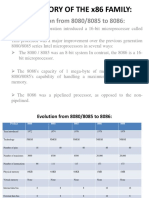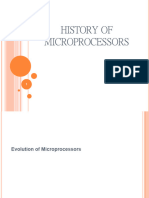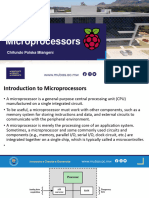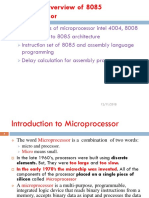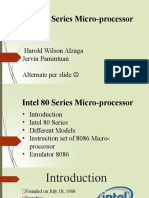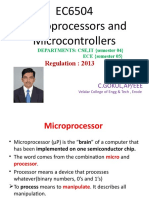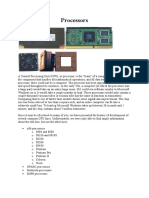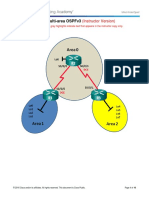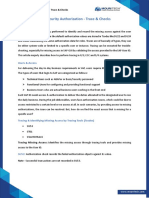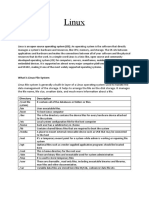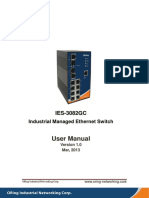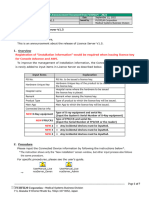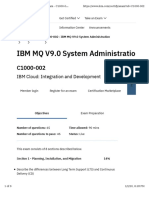0% found this document useful (0 votes)
28 views18 pagesELEC Lecture 2
The document outlines the evolution of Intel's microprocessors from the 8080/8085 to the Pentium, highlighting key advancements such as increased memory capacity, pipelining, and the introduction of 32-bit architecture. It details the specifications and features of various models including the 8086, 8088, 80286, 80386, and Pentium, emphasizing their impact on computing power and architecture. Additionally, it discusses the significance of Moore's law in the context of transistor counts and processing speeds over the decades.
Uploaded by
emadf5227Copyright
© © All Rights Reserved
We take content rights seriously. If you suspect this is your content, claim it here.
Available Formats
Download as PDF, TXT or read online on Scribd
0% found this document useful (0 votes)
28 views18 pagesELEC Lecture 2
The document outlines the evolution of Intel's microprocessors from the 8080/8085 to the Pentium, highlighting key advancements such as increased memory capacity, pipelining, and the introduction of 32-bit architecture. It details the specifications and features of various models including the 8086, 8088, 80286, 80386, and Pentium, emphasizing their impact on computing power and architecture. Additionally, it discusses the significance of Moore's law in the context of transistor counts and processing speeds over the decades.
Uploaded by
emadf5227Copyright
© © All Rights Reserved
We take content rights seriously. If you suspect this is your content, claim it here.
Available Formats
Download as PDF, TXT or read online on Scribd
/ 18



